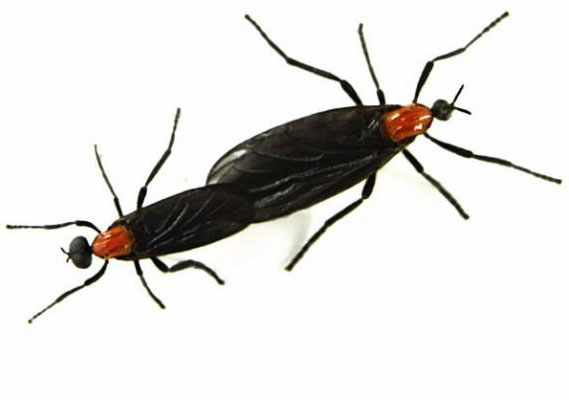 July 7, 2021–As I sat in a field in Southeast Texas a few weeks ago, I encountered a new (to me) species of native insect: Love bugs.
July 7, 2021–As I sat in a field in Southeast Texas a few weeks ago, I encountered a new (to me) species of native insect: Love bugs.
While the name conjures up notions of romance and cuteness, their presence is a plague.
According to locals, for a few days each spring, they swarm in a mating frenzy (not sure how they accomplish that feat on the wing) before landing on your furniture, your food, and you. And in you. And in your hair, down your shirt, in every orifice whether body, bottle, or USB port. They are crunching under my fingers as I type.
At first you try to brush them away. But after being attacked relentlessly for three days in the field, you just want to kill them. You lose all empathy for God’s creatures. You crush, spray, smash, and even inhale them, anything to make them stop.
In a huge leap, this experience helps me understand in a tiny way how genocide happens.
A normal human has an aversion to killing. It’s wired into us.
But when we cease to see any living being as an individual and instead see it as one of a group, we strip it of its “aliveness.”
This can be illustrated by our reluctance to squash the single beetle that crosses our path, while we have no problem stomping along a sidewalk covered in crickets.
I first experienced this insight while working in a turkey hatchery as a high schooler. Up to that time, the thought of killing a fluffy turkey poult never occurred to me. We even used to rescue them from not-quite-hatched eggs the hatchery had discarded at the city dump.
But when my buddies and I started working at the hatchery, the cuteness factor quickly evaporated. We were knee deep in thousands of baby turkeys, with more hatching twice a week. Their cheeping drilled into our brains, their down filled our lungs, and their excrement became a weapon to use against distracted coworkers.
Sadly, one of our duties was to cull poults that did not meet the standards of the marketplace. They were hatched late, or lame, or blind, or had bent spines and club feet. They were unable to survive, so it fell to us to ease them along on their inevitable journey. I won’t go into detail how we did it, but it was efficient and painless.
The point is that the first time it fell to me to destroy the chicks, I struggled with it. I was a teenager and had no experience with mass extinction. Yet, after going through the steps many times, I must confess it got easier, or more accurately–less onerous–to do. I had stopped seeing them as individual chicks, but instead as a group of defective specimens. Yes, it was my job. Yes, I was following orders.
I’ve seen a similar pattern while dispensing with other threats to my family or livelihood. From feral hogs to rabid raccoons, to chicken-slaying possums, the first time I had to dispatch a varmint attacking my livestock, I flinched. It never got easy, but with repetition, it got less difficult.
Harvesting is part of survival. Every creature does it, from the one-celled amoebas we observed through microscopes absorbing protozoa into their vacuoles to the blue whale seining krill through its baleen.
But any -icide morphs into pure evil when it becomes a weapon to eliminate any segment of the population based on their religion, politics, heritage, ethnicity, or any single subjective characteristic.
Everyone condemns it. But if you are honest, a tiny part of you can sadly understand how it can happen.
If only we could figure out how to stop it.
